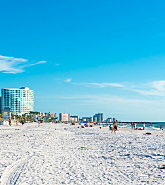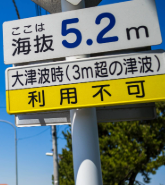I tried explaining to the boss of the car company that I wanted a driver for the afternoon to take me to the coast southeast of Bangkok, Thailand. I had to repeat the intended destination several times. Eventually with a look of complete disbelief he got it. I did not, as he had insisted, want to lounge on the beach at Pattaya, a two-hour drive, but instead visit the muddy Samut Prakan coast to the southeast of the city, only 30 minutes away. I wanted to check out the coastal industrial estates and the flood defenses and see whether they would afford any protection to Bangkok in the event of a major storm surge.
I was in Bangkok to give a talk at a half-day conference on the implications of the 2011 Thai floods for the insurance industry. Seven large industrial estates north of Bangkok had been flooded for more than a month in the 2011 floods, along with many towns and villages and huge areas of agricultural land. More than two million people had been displaced, and the cost to the economy was north of $40 billion. Almost $15 billion of that loss was insured, the large majority coming from the flooded auto and electronics manufacturing plants in the industrial estates. The government knew the credibility of Thailand’s industrial and manufacturing economy was at stake and provided $200 million in soft loans to the owners of the flooded estates to ring them with high quality flood walls. Work had been completed by February 2013. Still a billboard on the motorway to the airport advertised the rival Kabinburi industrial estate to the east of Bangkok as “the Industrial Estate that does not flood.”
The floods had arrived down the Chao Phraya River, fed by tributaries sourced from the whole north of the country. The river meanders to the sea past the western side of Bangkok, dumping plastic bags and tires along the muddy outer coastline. The river is tidal with a range up to 2.8 m. (The tides had been part of the problem in getting the 2011 flood waters to exit the estuary; during spring tides the river would flood back into northern Bangkok.)
While anticipating monsoon floods from the north, the 8.5 million people of Bangkok consider themselves free from tropical cyclones. As a result there is no public preparation for their impacts. Over the last 50 years, a few typhoons have tracked into the southern Gulf of Thailand. In 1962, a storm surge from Typhoon Harriet killed more than 900 in southern Thailand. In 2008, Category 4 Cyclone Nargis struck the city of Yangon (Rangoon), Myanmar, drowning more than 100,000 people in the Irrawaddy Delta. Yangon is a mere 500 km northeast of Bangkok.
I had come to explore what lay between a potential catastrophic storm surge arriving along the Samut Prakan coast and the inundation of Bangkok. As a result of pumping out groundwater for the local industries, large areas of greater Bangkok now lie below sea level. In principle, if the water reached even 1 m above the high tide level, flooding could extend more than 30 km inland right into the heart of the city.
I bought a high-resolution map of greater Bangkok in London knowing that navigation would be challenging. These were not destinations frequented by tourists. There are industrial estates and manufacturing facilities blocking access to parts of the coast. With the help of my knowledgeable driver, we found that some of the best coastal access was at a series of Buddhist temples just inland from the coastline. The saffron-robed monks live in simple houses, connected with concrete walkways and set on stilts among the tidal mangrove swamps. The tide was receding and mudfish with bulging eyes flopped around in the rank mud. Along some exposed sections on the outer edge of the mangroves, there was an embankment of loose rocks. However on other sections the mangrove swamps had no more protection than a line of stakes stuck into the mud. Having investigated the coastal defenses I also took a look at the flood walls along the river. A large storm surge would ride up the estuary of Chao Phraya River, potentially finding this the easiest path into the heart of Bangkok.
My quick survey of the Samut Prakan and Chao Phraya coasts confirmed the suspicion that Bangkok’s greatest flooding threat may not be from river floods arriving from the north, as occurred in 2011, but a storm surge driven by a Category 2-3 typhoon coming in from the Gulf of Thailand. Unlike their newly defended inland counterparts, some of Thailand’s coastal industrial estates have no more flood protection than the monks.






